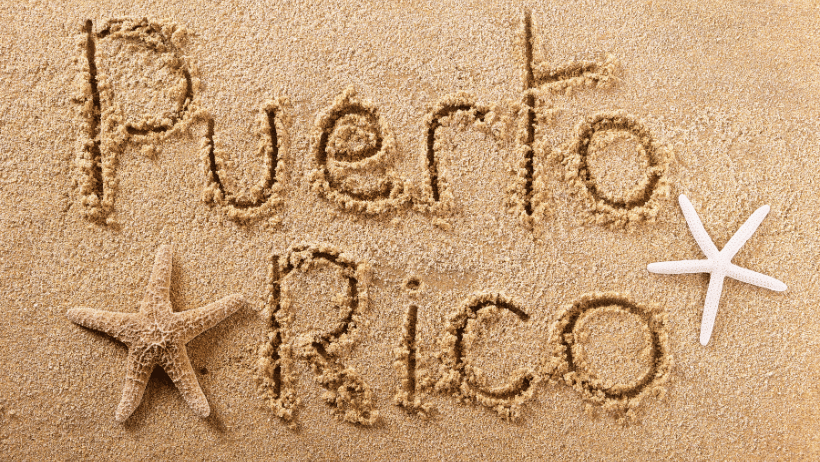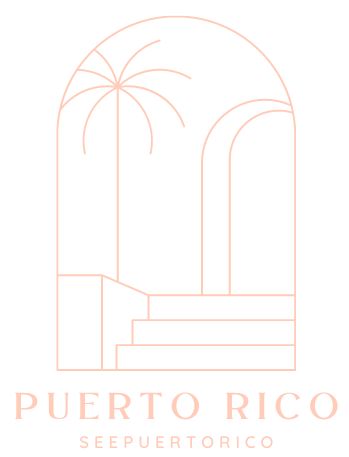What time zone is Puerto Rico? Discover in this article that it follows AST, four hours behind UTC-4. Uncover how this simplifies communication and travel planning. Delve into time zones’ establishment and the significance of the Prime Meridian. Stay engaged as you learn about Puerto Rico’s culture, events, and safety measures. Prepare for an enriching journey through this tropical paradise, where history, culture, and natural beauty await your exploration.
Geographical Location of Puerto Rico
Puerto Rico is situated in the Caribbean region as a territory of the United States. The island’s climate patterns offer warm temperatures year-round, perfect for enjoying outdoor activities. This includes hiking in El Yunque National Forest or surfing at Rincon Beach. Puerto Rico is rich in historical landmarks such as the impressive Castillo San Felipe del Morro in Old San Juan, showcasing its colonial past.
When it comes to local cuisine, you must try the mofongo, a traditional dish made of fried plantains mashed with garlic and pork cracklings.
Additionally, Puerto Rico is famous for its bioluminescent waters, particularly in Mosquito Bay on the island of Vieques. Here you can kayak under the shimmering glow of microscopic organisms. This surely makes your visit to Puerto Rico unforgettable.
What Time Zone Is Puerto Rico
Nestled in the heart of the Caribbean, Puerto Rico adheres to the Atlantic Standard Time (AST) without observing Daylight Saving Time. This time zone stability offers consistency for various activities. Here are some key aspects to consider:
- Daylight hours: With the AST, you can expect consistent daylight hours throughout the year, providing predictability for planning your daily activities under the Caribbean sun.
- Global coordination: Being in the AST time zone allows for seamless coordination with other countries in the region. Then, this facilitates international business, communication, and travel arrangements.
- Sunset times: The sunset times in Puerto Rico remain relatively consistent due to the lack of Daylight Saving Time adjustments, ensuring you can enjoy stunning sunsets at consistent times.
Adhering to the AST enhances Puerto Rico’s international connections. It also simplifies scheduling across time zones, and maintains timekeeping accuracy for a hassle-free experience on this vibrant island.
Impact of Daylight Saving Time
Adhering to the Atlantic Standard Time (AST) without observing Daylight Saving Time provides consistency for various activities in Puerto Rico, ensuring you can plan your daily routines efficiently. The impact of not changing the clocks forward or backward has both benefits and drawbacks. One significant benefit is the stability it brings to daily schedules and businesses. With consistent timekeeping, there are fewer disruptions in meetings, transportation schedules, and overall planning.
However, the drawback lies in the potential misalignment with mainland U.S. time zones during Daylight Saving Time periods. This can complicate coordination with counterparts in those regions. The effects of not springing forward or falling back include maintaining a more predictable sunrise and sunset pattern throughout the year.
This practice has implications for energy consumption, as the evening daylight hours remain relatively constant, potentially reducing the need for artificial lighting. Overall, the decision not to observe Daylight Saving Time in Puerto Rico has its trade-offs. It also provides a stable timekeeping environment for its residents.
Relationship to Eastern Standard Time
When living in Puerto Rico, you will find that the relationship to Eastern Standard Time influences various aspects of daily life.
How it affects you:
- Time Difference: Being in the Eastern Standard Time zone means that Puerto Rico is 1 hour ahead of U.S. Eastern Standard Time during Daylight Saving Time.
- Travel Planning: Understanding the time zone is crucial for coordinating flights, meetings, or virtual interactions with individuals in other locations.
- Global Time: The Eastern Standard Time zone is widely recognized and used in various regions, making it easier to communicate and schedule activities with people across different countries.
Time Zone Consistency in Communication
As a resident of Puerto Rico, you will notice the significant impact of aligning with the Eastern Standard Time zone on your daily communication and interactions. This time zone consistency plays a crucial role in enhancing global connectivity, improving communication efficiency, and enabling smooth international coordination.
By sharing the same time zone as the Eastern United States, Puerto Rico ensures a seamless flow of information. It also facilitates timely interactions with international partners, businesses, and travelers. The time zone impact goes beyond just clock adjustments. It fosters a sense of reliability and consistency in scheduling meetings, conference calls, and virtual events across different regions.
This alignment not only simplifies logistical arrangements but also promotes effective collaboration and engagement with individuals and organizations worldwide. Embracing a standardized time zone like Eastern Standard Time contributes to smoother communication practices, eliminates confusion, and ultimately enhances productivity in today’s interconnected world.
What Time Zone Is Puerto Rico? Time Zone Establishment
Maintain the consistency of time zones in your daily interactions by understanding the correlation between Time Zone Establishment and Earth’s Rotation. When delving into this topic, consider the following key aspects:
- Solar noon calculations: Solar noon is the time of day when the sun reaches its highest point in the sky. Time zones are established based on the concept of solar noon, ensuring that noon aligns with the sun’s position in each zone.
- Global time coordination: Time zones enable global coordination by dividing the Earth into longitudinal segments. This division allows for efficient communication, scheduling, and travel planning across different regions of the world.
- Timekeeping history: The history of timekeeping is intricately linked to the establishment of time zones. From the development of sundials to the introduction of atomic clocks, humanity’s quest for precise time measurement has shaped how we organize our days and interactions.
Understanding longitudinal time divisions, time zone boundaries, and the intricate relationship between timekeeping and Earth’s rotation is crucial for navigating the modern interconnected world seamlessly.
Cultural Vibrancy in Puerto Rico
To truly experience Puerto Rico, immerse yourself in its cultural vibrancy. The island is a melting pot of diverse influences, offering a rich tapestry of traditions and celebrations. From LGBTQ+ celebrations to traditional festivals, Puerto Rico’s cultural scene is vibrant and inclusive. The musical heritage of the island is deeply rooted in African, Spanish, and Taino cultures, with genres like salsa, reggaeton, and bomba adding rhythm to daily life.
Traditional festivals bring communities together, showcasing crafts, music, and food in lively parades and religious processions. Alongside the cultural events, Puerto Rico’s beach culture is a way of life, where the sun-kissed shores provide a backdrop for relaxation and enjoyment.
The culinary fusion of Spanish, African, and Taino flavors creates a unique gastronomic experience, blending spices and techniques into mouthwatering dishes.
Embrace the lively spirit of Puerto Rico by exploring its LGBTQ+ scene, indulging in its musical rhythms. Also savoring its traditional festivals, enjoying its beach culture, and tasting its culinary fusion.
| LGBTQ+ Celebrations | Musical Heritage | Traditional Festivals |
|---|---|---|
| Inclusive bars and clubs | Influenced by African, Spanish, and Taino cultures | Showcasing crafts, music, and food |
| Annual Pride events | Genres like salsa, reggaeton, and bomba | Lively parades and religious processions |
What Time Zone Is Puerto Rico? Practical Travel Information for Visitors
For visitors to Puerto Rico, familiarity with local customs is essential for a smooth travel experience. When planning your trip, consider the following practical tips:
- Currency Exchange: Puerto Rico uses the US dollar, making it convenient for American travelers. However, it’s still advisable to exchange some cash for small purchases at local markets or for tipping. ATMs are widely available in tourist areas for additional currency needs.
- Car Rentals: Renting a car can enhance your Puerto Rico experience, offering flexibility to explore the island at your own pace. Local and international rental agencies operate on the island, providing options for different budgets and preferences. Familiarize yourself with local driving regulations and road signs before embarking on your journey.
- Safety Measures: While Puerto Rico is generally safe for tourists, it’s important to take common-sense precautions. Keep valuables secure, avoid isolated areas at night, and be aware of your surroundings. By staying vigilant and informed, you can enjoy a worry-free visit to this beautiful destination.









